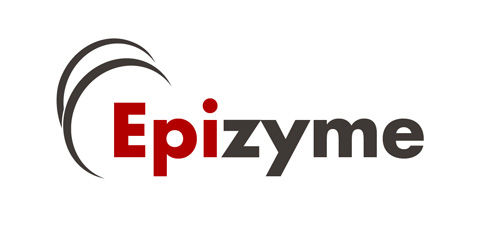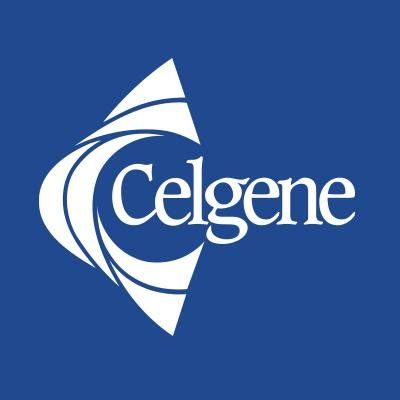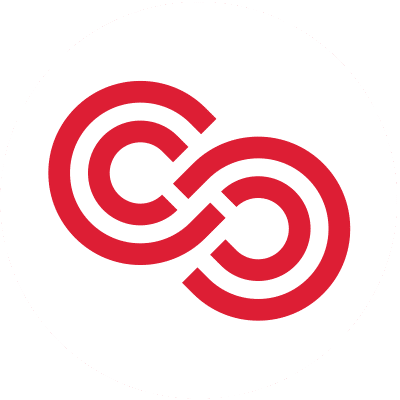预约演示
更新于:2025-12-22

Epizyme, Inc.
更新于:2025-12-22
概览
标签
肿瘤
其他疾病
血液及淋巴系统疾病
小分子化药
疾病领域得分
一眼洞穿机构专注的疾病领域
暂无数据
技术平台
公司药物应用最多的技术
暂无数据
靶点
公司最常开发的靶点
暂无数据
| 排名前五的药物类型 | 数量 |
|---|---|
| 小分子化药 | 21 |
关联
21
项与 Epizyme, Inc. 相关的药物33
项与 Epizyme, Inc. 相关的临床试验NCT06068881
A Phase 2, Open-label, Single-Arm Clinical Trial to Investigate the Efficacy and Safety of Oral Tazemetostat for the Treatment of Adult Participants Age 18 and Over With Relapsed/Refractory Follicular Lymphoma Lacking the EZH2 Gain-of-Function (GOF) Mutation
The purpose of this research study is to learn about the effectiveness and safety of the study drug, tazemetostat, in adults with relapsed/refractory follicular lymphoma whose tumours do not have an "EZH2 gain-of-function" genetic mutation. Follicular lymphoma is a blood cancer. It affects white blood cells called lymphocytes. White blood cells normally help to fight infections, but when you have follicular lymphoma, the blood cells can form tumours in your body. 'Relapsed/refractory' follicular lymphoma means the disease has either not improved or is getting worse (progressing) during or after previous treatment.
Tazemetostat already has approval in the United States for the treatment of adult patients with relapsed/refractory follicular lymphoma with or without the "EZH2" mutation who have no satisfactory alternative treatment options.
This study is being conducted to better understand the effectiveness in patients whose tumours do not have an "EZH2 gain-of-function" genetic mutation and who previously received therapies commonly used in the U.S. in your body.
'Relapsed/refractory' follicular lymphoma means the disease has either not improved or is getting worse (progressing) during or after previous treatment.
Tazemetostat already has approval in the United States for the treatment of adult patients with relapsed/refractory follicular lymphoma with or without the "EZH2 gain-of-function" mutation who have no satisfactory alternative treatment options. This study is being conducted to better understand the effectiveness in patients whose tumours do not have an "EZH2" genetic mutation and who previously received therapies commonly used in the U.S.
In this study, all participants will receive the study drug. It will be taken by mouth (orally), as a tablet, twice daily. The sizes and number of tumours according to scan results will be collected as well as results of safety tests (such as physical examinations and laboratory tests).
The study consists of 4 periods:
* Screening period may take up to 4 weeks and require at least 1 visit.
* Treatment period will require 2 visits for each of the first 2 months, followed by 1 visit every month for the remainder of the first 12 months, followed by 1 visit every 3 months (except for women of childbearing potential [WOCBP], who will continue to have a pregnancy testing every month) until unacceptable toxicity, disease progression, or the start of new systemic anticancer therapy, whichever is first.
* Safety follow-up period will last for 1 month after the last dose of tazemetostat, and it will end with 1 visit or telephone call.
* Long-term follow-up period is only for participants who stop taking tazemetostat while their disease continues to respond; this period will last until disease progression, start of new cancer treatment, or death from any cause, whichever is first, and will require a visit every 3 months.
Tazemetostat will be provided to participants who tolerate it for as long as their disease does not progress.
Participants may be transferred to another study or program after about 2 years for continued treatment with tazemetostat or for long-term follow-up. Patients may withdraw consent to participate at any time.
Tazemetostat already has approval in the United States for the treatment of adult patients with relapsed/refractory follicular lymphoma with or without the "EZH2" mutation who have no satisfactory alternative treatment options.
This study is being conducted to better understand the effectiveness in patients whose tumours do not have an "EZH2 gain-of-function" genetic mutation and who previously received therapies commonly used in the U.S. in your body.
'Relapsed/refractory' follicular lymphoma means the disease has either not improved or is getting worse (progressing) during or after previous treatment.
Tazemetostat already has approval in the United States for the treatment of adult patients with relapsed/refractory follicular lymphoma with or without the "EZH2 gain-of-function" mutation who have no satisfactory alternative treatment options. This study is being conducted to better understand the effectiveness in patients whose tumours do not have an "EZH2" genetic mutation and who previously received therapies commonly used in the U.S.
In this study, all participants will receive the study drug. It will be taken by mouth (orally), as a tablet, twice daily. The sizes and number of tumours according to scan results will be collected as well as results of safety tests (such as physical examinations and laboratory tests).
The study consists of 4 periods:
* Screening period may take up to 4 weeks and require at least 1 visit.
* Treatment period will require 2 visits for each of the first 2 months, followed by 1 visit every month for the remainder of the first 12 months, followed by 1 visit every 3 months (except for women of childbearing potential [WOCBP], who will continue to have a pregnancy testing every month) until unacceptable toxicity, disease progression, or the start of new systemic anticancer therapy, whichever is first.
* Safety follow-up period will last for 1 month after the last dose of tazemetostat, and it will end with 1 visit or telephone call.
* Long-term follow-up period is only for participants who stop taking tazemetostat while their disease continues to respond; this period will last until disease progression, start of new cancer treatment, or death from any cause, whichever is first, and will require a visit every 3 months.
Tazemetostat will be provided to participants who tolerate it for as long as their disease does not progress.
Participants may be transferred to another study or program after about 2 years for continued treatment with tazemetostat or for long-term follow-up. Patients may withdraw consent to participate at any time.
开始日期2025-09-02 |
申办/合作机构  Epizyme, Inc. Epizyme, Inc. [+1] |
NCT05567679
IIT2021-09-Posadas-NA-TAZ: A Study of Tazemetostat (Tazverik) Before Prostatectomy in Men With Prostate Cancer
This study is an open-label, single-arm, pilot, perioperative study of EZH2 inhibition in patients undergoing Radical Prostatectomy (RP). The EZH2 inhibition is intended to increase the sensitivity of the underlying tumor to the patient's immune system.
Given the absence of data in this setting, we propose to pilot this experience with 4 weeks of tazemetostat at doses known to be clinically safe and effective at inducing clinical effects via inhibition of EZH2 as established for follicular lymphoma and epithelioid sarcoma: 800 mg twice daily with or without food.
Prior to tazemetostat, blood will be collected (4 tubes) for immune cells, Circulating Tumor Cells, and plasma. This will be repeated at the time of RP. RP tissues will be collected.
Additionally, patients will have a week lead-in to wear a FitBit Charge 5TM device (or similar model) to continuously monitor physical activity from baseline up until end of study. The start of the week lead-in will be considered the baseline visit. Subjects will also be asked to continue wearing the device until end of study and option to continue for up to 2 years after end of study in follow-up.
Given the absence of data in this setting, we propose to pilot this experience with 4 weeks of tazemetostat at doses known to be clinically safe and effective at inducing clinical effects via inhibition of EZH2 as established for follicular lymphoma and epithelioid sarcoma: 800 mg twice daily with or without food.
Prior to tazemetostat, blood will be collected (4 tubes) for immune cells, Circulating Tumor Cells, and plasma. This will be repeated at the time of RP. RP tissues will be collected.
Additionally, patients will have a week lead-in to wear a FitBit Charge 5TM device (or similar model) to continuously monitor physical activity from baseline up until end of study. The start of the week lead-in will be considered the baseline visit. Subjects will also be asked to continue wearing the device until end of study and option to continue for up to 2 years after end of study in follow-up.
开始日期2023-12-01 |
申办/合作机构 |
NCT05994235
A Phase II Trial of Tazemetostat Plus Mosunetuzumab in Untreated Follicular Lymphoma
The goal of this study is to learn about the safety and effectiveness of the combination of tazemetostat pills in combination with mosunetuzumab injections for people with follicular lymphoma who haven't received treatment before. The investigators hypothesize that tazemetostat with mosunetuzumab has the potential to increase the efficacy of the product without compromising the safety.
Tazemetostat is a drug that inhibits EZH2, an enzyme known to drive the development of B-cell lymphomas, and inhibiting it appears to have many effects that slow down lymphoma growth and enhance the immune system's ability to fight it. Tazemetostat is FDA-approved in previously treated follicular lymphoma and currently undergoing study in other lymphomas.
Mosunetuzumab is a bispecific antibody therapy that is a therapeutic strategy that uses the immune system to fight lymphoma, called immunotherapy. Bispecific antibodies have two ends: one attaches to T cells in the immune system and the other attaches to lymphoma cells, helping guide our immune system to attack the cancer. Mosunetuzumab has been studied in follicular lymphoma that has previously been treated, with positive results. Mosunetuzumab is approved by the FDA to be given intravenously (directly into a vein) but is not yet approved by the FDA is not yet approved as an injection under the skin, which is how it is given in this study. They have not yet been studied in combination.
Tazemetostat is a drug that inhibits EZH2, an enzyme known to drive the development of B-cell lymphomas, and inhibiting it appears to have many effects that slow down lymphoma growth and enhance the immune system's ability to fight it. Tazemetostat is FDA-approved in previously treated follicular lymphoma and currently undergoing study in other lymphomas.
Mosunetuzumab is a bispecific antibody therapy that is a therapeutic strategy that uses the immune system to fight lymphoma, called immunotherapy. Bispecific antibodies have two ends: one attaches to T cells in the immune system and the other attaches to lymphoma cells, helping guide our immune system to attack the cancer. Mosunetuzumab has been studied in follicular lymphoma that has previously been treated, with positive results. Mosunetuzumab is approved by the FDA to be given intravenously (directly into a vein) but is not yet approved by the FDA is not yet approved as an injection under the skin, which is how it is given in this study. They have not yet been studied in combination.
开始日期2023-11-01 |
申办/合作机构 |
100 项与 Epizyme, Inc. 相关的临床结果
登录后查看更多信息
0 项与 Epizyme, Inc. 相关的专利(医药)
登录后查看更多信息
62
项与 Epizyme, Inc. 相关的文献(医药)2023-12-01·Cancer research
EZH2 Cooperates with BRD4-NUT to Drive NUT Carcinoma Growth by Silencing Key Tumor Suppressor Genes
Article
作者: Eagen, Kyle P. ; Anekal, Praju V. ; Luo, Jia ; Durall, R. Taylor ; Persky, Nicole S. ; Kutok, Jeffery L. ; Root, David E. ; Ponne, Christopher ; Lemieux, Madeleine E. ; David, Clement N. ; Luong, Nhi M. ; Le, Quan ; Shapiro, Geoffrey I. ; Huang, Julianna ; Saluja, Karan ; Hertzler, Hans J. ; Huang, Yeying ; Zahnow, Cynthia A. ; Raimondi, Alejandra ; Hawkins, Catherine E. ; French, Christopher A. ; Stegmaier, Kimberly ; Montero Llopis, Paula D.L.M. ; Leeper, Brittaney A. ; Gokhale, Prafulla C. ; Adane, Biniam
Abstract:
NUT carcinoma is an aggressive carcinoma driven by the BRD4-NUT fusion oncoprotein, which activates chromatin to promote expression of progrowth genes. BET bromodomain inhibitors (BETi) are a promising treatment for NUT carcinoma that can impede BRD4-NUT's ability to activate genes, but the efficacy of BETi as monotherapy is limited. Here, we demonstrated that enhancer of zeste homolog 2 (EZH2), which silences genes through establishment of repressive chromatin, is a dependency in NUT carcinoma. Inhibition of EZH2 with the clinical compound tazemetostat potently blocked growth of NUT carcinoma cells. Epigenetic and transcriptomic analysis revealed that tazemetostat reversed the EZH2-specific H3K27me3 silencing mark and restored expression of multiple tumor suppressor genes while having no effect on key oncogenic BRD4-NUT–regulated genes. Indeed, H3K27me3 and H3K27ac domains were found to be mutually exclusive in NUT carcinoma cells. CDKN2A was identified as the only gene among all tazemetostat-derepressed genes to confer resistance to tazemetostat in a CRISPR-Cas9 screen. Combined inhibition of EZH2 and BET synergized to downregulate cell proliferation genes, resulting in more pronounced growth arrest and differentiation than either inhibitor alone. In preclinical models, combined tazemetostat and BETi synergistically blocked tumor growth and prolonged survival of NUT carcinoma–xenografted mice, with complete remission without relapse in one cohort. Identification of EZH2 as a dependency in NUT carcinoma substantiates the reliance of NUT carcinoma tumor cells on epigenetic dysregulation of functionally opposite, yet highly complementary, chromatin regulatory pathways to maintain NUT carcinoma growth.
Significance::
Repression of tumor suppressor genes, including CDKN2A, by EZH2 provides a mechanistic rationale for combining EZH2 and BET inhibitors for the clinical treatment of NUT carcinoma.See related commentary by Kazansky and Kentsis, p. 3827
2022-05-11·Oncotarget
Tazemetostat in relapsed/refractory follicular lymphoma: a propensity score-matched analysis of E7438-G000-101 trial outcomes
Article
作者: Kamp, Beth A. ; Proudman, David G. ; Cheson, Bruce D. ; Nellesen, Dave ; Yang, Jay ; Gupta, Deepshekhar ; Mamlouk, Khalid
PURPOSE:
In the tazemetostat E7438-G000-101 trial of relapsed/refractory (R/R) follicular lymphoma (FL), apparent superior efficacy was suggested for mutant-type (MT) EZH2 versus wild-type (WT) status. However, clinical disparities might have contributed to this conclusion. This study aimed to estimate outcomes after minimizing differences in baseline characteristics.
METHODS:
Propensity scores for each participant with WT (n = 54) and MT (n = 45) status were generated based on the likelihood of being selected given their baseline characteristics. Participants were matched using a 1:1 nearest-neighbor approach.
RESULTS:
The propensity-matched sample included 56 participants (28 WT, 28 MT). Objective response rates (95% confidence interval [CI]) were 35% (22-48) in WT and 69% (55-83) in MT prior to matching and 50% (31-69) in WT and 71% (54-88) in MT after matching. Median progression-free survival values (95% CI) were 11.1 (5.4-16.7) in WT and 13.8 months (11.1-22.1) in MT prior to matching and 14.3 (11.1-∞]) and 14.8 months (10.7-∞]) in WT and MT matched groups, respectively.
CONCLUSIONS:
This analysis suggests that efficacy outcomes for tazemetostat observed in participants with WT EZH2 R/R FL may have been similar to those in participants with MT had the 2 cohorts been more closely matched.
2022-05-01·Analytical biochemistry
Corrigendum to “Impact of enzyme concentration and residence time on apparent activity recovery in jump dilution analysis” [Anal. Biochem. 416 (2011) 206–210]
作者: Moyer, Mikel ; Basavapathruni, Aravind ; Copeland, Robert A ; Porter Scott, Margaret
197
项与 Epizyme, Inc. 相关的新闻(医药)2025-12-09
·搜狐新闻
12月7日,国家医保局正式发布2025年《国家基本医疗保险、生育保险和工伤保险药品目录》(下称“国家医保药品目录”)及《商业健康保险创新药品目录》(下称“商保目录”),标志着我国多层次医疗保障体系建设迈出关键一步。2025年医保目录调整的核心突破在于建立了“基本医保+商保创新药”的双层支付体系。基本医保目录继续坚守“保基本”定位,首次设立的商保创新药目录则为高价值创新药开辟了专门的支付通道。随着基本医保与商业健康保险衔接机制的不断完善,张江药谷加速形成“研发-审批-上市-进院-医保”的良性循环,为中国生物医药创新提供更加完善的生态系统。一批来自张江药谷、具备高临床价值的“中国首发”乃至“全球首创”产品,通过更加清晰、多元的支付路径,进一步加速惠及百姓 。Part 01国家医保药品目录,可及可支付,造福全球患者2025年国家医保药品目录成功新增114种药品,有50种是1类创新药,总体成功率88%,较2024年的76%明显提高。据不完全统计,来自张江药谷企业银诺医药、英派药业、劲方医药、艾力斯医药、复宏汉霖、康方生物、翰森制药的多款创新产品被纳入国家医保药品目录。● 首次纳入医保银诺医药银诺医药自主研发的超长效GLP-1受体激动剂依苏帕格鲁肽α(怡诺轻®)今年1月获批,12月就纳入医保,表明了医保对真正具有临床价值的创新药物的支持力度。作为国产超长效GLP-1受体激动剂,怡诺轻®具有半衰期长、给药频次低、血糖依赖性调节等特点,是全球第三个、亚洲首个进入商业化阶段的超长效GLP-1受体激动剂,也是中国本土原创的同类首款创新药物。英派药业英派药业自主研发的最新1.5代PARP抑制剂塞纳帕利胶囊(派舒宁®)也是今年1月获批。此次进入医保的适应症为晚期卵巢癌全人群一线维持治疗。派舒宁®III期注册性研究FLAMES Study结果显示,塞纳帕利维持治疗能够显著延长晚期卵巢癌患者的中位无进展生存期(mPFS),而且无论患者是否伴有乳腺癌易感基因(BRCA)突变,均能从塞纳帕利治疗中获益。同时,塞纳帕利耐受性良好,安全性可控。该研究数据已于2024年5月发表于国际顶级医学期刊《Nature Medicine》。劲方医药劲方医药氟泽雷塞(达伯特®)同样是首次参加谈判即成功纳入国家医保药品目录。达伯特®是国内首个、全球第三个获批的KRAS G12C抑制剂,其单药疗法上市前已在国内获得治疗晚期NSCLC、晚期结直肠癌(CRC)的突破性疗法认定,以及新药上市的优先审评资格。复宏汉霖复宏汉霖乳腺癌创新产品CDK4/6抑制剂枸橼酸伏维西利胶囊(复妥宁®)亦是首次进入国家医保药品目录,获纳入的适应症为联合氟维司群用于既往接受内分泌治疗后出现疾病进展的激素受体(HR)阳性、人表皮生长因子2(HER2)阴性的复发或转移性成年乳腺癌患者。如今,复宏汉霖已有6款产品进入新版国家医保目录。● 成功续约和黄医药和黄医药“三大替尼”呋喹替尼(爱优特® )、赛沃替尼(沃瑞沙® ) 、索凡替尼(苏泰达® ) 则是成功续约。其中爱优特® 获纳入联合达伯舒® (信迪利单抗注射液) 用于治疗既往系统性抗肿瘤治疗后失败且不适合进行根治性手术治疗或根治性放疗的晚期错配修复完整 (pMMR) 子宫内膜癌患者。爱优特®还获续约用于治疗既往接受过氟尿嘧啶类、奥沙利铂和伊立替康为基础的化疗,以及既往接受过或不适合接受抗血管内皮生长因子(VEGF) 治疗、抗表皮生长因子受体 (EGFR) 治疗 (RAS野生型) 的转移性结直肠癌患者。艾力斯医药艾力斯医药甲磺酸伏美替尼片(艾弗沙®)同样成功续约。作为艾力斯医药自主研发的国家1类创新药,艾弗沙®临床研究显示其在多种 EGFR 突变的非小细胞肺癌治疗中的取得广泛疗效及良好耐受性,已被纳入多项权威指南/共识,并获得中美多项突破性疗法认定。公司枸橼酸戈来雷塞片(艾瑞凯®)以及拥有中国大陆独家商业化推广权的普拉替尼胶囊(普吉华®)则为首次进入。君实生物君实生物的4款商业化产品:特瑞普利单抗(拓益®)、阿达木单抗(君迈康®)、氢溴酸氘瑞米德韦片(民得维®)、昂戈瑞西单抗(君适达®)均纳入国家医保药品目录。其中,拓益®(特瑞普利单抗)2项新增适应症“联合贝伐珠单抗用于不可切除或转移性肝细胞癌(HCC)患者的一线治疗”和“用于不可切除或转移性黑色素瘤的一线治疗”成功纳入。至此,特瑞普利单抗在中国内地获批的12项适应症全部纳入国家医保目录,是目录中唯一用于肾癌、三阴性乳腺癌和黑色素瘤的抗PD-1单抗产品。特瑞普利单抗为君实生物首款商业化产品,目前已在中、美、欧等地超过40个国家和地区获批上市。翰森制药翰森制药培莫沙肽注射液(圣罗莱®)、艾米替诺福韦片(恒沐®)所有适应症也续约纳入2025国家医保目录。公司创新药甲磺酸阿美替尼片(阿美乐®)两项新增适应症则是首次纳入国家医保目录。阿美乐®是翰森制药自主研发的中国首个原研三代表皮生长因子受体(EGFR)酪氨酸激酶抑制剂(TKI)创新药,是目前获批适应症最多、治疗领域最广的中国原研三代EGFR-TKI。恒沐®是中国首个原研口服抗乙型肝炎病毒药物。康方生物康方生物5个自研新药参与本轮国家医保谈判的所有适应症,全部谈判成功进入国家医保目录,包括双抗新药卡度尼利和依沃西新增多个一线大适应症,以及3个首次参与谈判药物的全部适应症。截至目前,康方生物5个自主商业化自研新药的全部获批适应症,均已纳入国家医保目录。Part 02商保创新药目录,创新支付加速惠民基本医保目录之外,国家医保局首次增设的商保创新药目录,聚焦创新程度很高、临床价值巨大、患者获益显著的药物,以前所未有的力度为创新药产业链赋能,提升药物可及性。 创新药,尤其是细胞与基因治疗、罕见病药物等前沿领域的产品,长期面临“上市难、进院难、支付难”的困境。基本医疗保险基金作为一项普惠性制度,必须坚持“保基本”,难以独自承载所有高值创新药。与此同时,我国商业健康保险市场虽快速成长,但在保障效能、与医药创新衔接等方面仍有巨大发展空间。(图片来源:医药经济报)《商保目录》的设立,正是为了打通“最后一公里”的支付瓶颈。今年商保创新药目录共纳入19种药品,覆盖细胞与基因治疗、罕见病、肿瘤等前沿领域的产品,旨在为临床价值高但价格昂贵的创新药开辟商业健康保险这一新的支付通道。其中,张江药谷本土企业和黄医药、药明巨诺、复星凯瑞、科济药业、北海康成,张江跨国企业百时美施贵宝、礼来、辉瑞、强生研发的创新药品皆进入商保目录。和黄医药他泽司他 (达唯珂®) 用于治疗既往接受过至少两种系统性治疗后的EZH2突变阳性复发或难治性滤泡性淋巴瘤成人患者。他泽司他是由益普生 (Ipsen) 旗下公司Epizyme开发的全球同类首创的EZH2甲基转移酶抑制剂。和黄医药与Epizyme达成一项战略合作,负责在中国内地、香港、澳门和台湾进行他泽司他的研究、开发、生产以及商业化。在细胞与治疗领域复星凯瑞、药明巨诺、科济药业3家企业的CAR-T产品成功纳入国家商保创新药品目录,标志着创新前沿的细胞治疗产品的临床价值及创新性获得高度认可。🔎 复星凯瑞阿基仑赛注射液(奕凯达®)是中国首款CAR-T治疗药品,实现了中国细胞治疗领域从“0”到“1”的突破。2023年6月,奕凯达®新适应症(一线免疫化疗无效或在一线免疫化疗后12个月内复发的成人大B细胞淋巴瘤)获批上市。🔎 药明巨诺瑞基奥仑赛注射液(倍诺达®)是首款中国自主研发的CAR-T产品,也是目前国内唯一一款获批三个非霍奇淋巴瘤适应症的CAR-T产品(包括复发难治性大B细胞淋巴瘤、复发难治性滤泡性淋巴瘤和复发难治性套细胞淋巴瘤)。🔎 科济药业泽沃基奥仑赛注射液(赛恺泽®)于2024年2月23日获得NMPA批准上市,用于治疗复发或难治性多发性骨髓瘤成人患者,既往经过至少3线治疗后进展(至少使用过一种蛋白酶体抑制剂及免疫调节剂)。在罕见病领域🔎 北海康成自主研发的注射用维拉苷酶β(戈芮宁)是国内首个本土自主研发并进入临床应用的用于治疗I型和III型戈谢病患者的重组人源脑苷脂酶替代疗法,也是我国首个通过生物制品分段生产检查的创新生物药。返回搜狐,查看更多
优先审批突破性疗法上市批准申请上市
2025-12-09
近年来,合成致死(synthetic lethality)作为一种独特的精准治疗策略,在抗癌领域得到广泛关注与应用。尤其在多款PARP抑制剂成功上市,并显示出快速增长的销售趋势。进一步加剧全球对合成致死的研究热情,吸引了广大药企的相继布局。
但近日,GSK通报终止与IDEAYA Biosciences关于实体瘤合成致死药物的合作,退回两款合成致死机制药物的临床项目IDE275和IDE705,代表GSK又一次放弃了对合成致死机制药物的开发努力。
GSK布局合成致死
GSK是最早布局合成致死机制药物的大型生物制药公司之一。
2011年,GSK与Epizyme达成合作,共同开发靶向作用于组蛋白甲基转移酶药物,包括PRMT5、PRMT1和另外一个项目。
2018年12月,GSK以51亿美元(40亿英镑)收购了TESARO公司,将当时全球唯三上市的PARP抑制剂niraparib收入囊中。次年,niraparib显示出快速增长的销售潜力,刺激了GSK进一步投资合成致死机制药物开发。
2020年6月,GSK与IDEAYA Biosciences达成了总价值高达31.2亿美元的合作,包含三个临床前合成致死研发项目,分别靶向MAT2A,DNA聚合酶theta(pol theta)和Werner解旋酶。
GSK连续放弃合成致死
除了已经上市的niraparib之外,GSK这几年在合成致死的投资基本以失败告终。
首先在2017年,GSK率先放弃了与Epizyme合作的三个项目之一,继续推进PRMT5和PRMT1项目。
随后在2022年2月,GSK完全终止了与Epizyme的合作,退回PRMT5抑制剂GSK3326595和PRMT1抑制剂GSK3368715权益,并且未过多提及终止原因。根据报道,有可能是基于GSK对于合成致死机制的开发优先级下调,以及PRMT5抑制剂GSK3326595在临床研究中显示出严重的副作用。
放弃了PRMT5和PRMT1项目之后,GSK在2022年第二季度退回了与IDEAYA公司合作的MAT2A项目IDE397。——IDE397最初的合作目的就是与GSK原有的PRMT5和PRMT1抑制剂联用,随着GSK放弃了PRMT5和PRMT1,IDE397的合作意义就不大。随着GSK退回了IDE397,IDEAYA公司重新拥有了IDE397的全球权益。
2025年12月,GSK向IDEAYA公司通报决定终止2020年6月15日签署的合作、选择权及许可协议。根据协议条款,终止将在GSK书面通知之日起90天内生效。在90天的过渡期,GSK将Werner解旋酶(IDE275)和pol theta(IDE705)两个临床项目退回给IDEAYA公司。——GSK并未声明终止合作的理由。值得注意的是,GSK与IDEAYA最初达成合作的时候,所有三款合作项目均处于临床前阶段,放弃的时候均已推进临床阶段。
小结
对于GSK的合作终止,IDEAYA公司表示,这并不影响其管线推进,预计将于今年年底或明年年初报告其主要核心管线GNAQ/11抑制剂darovasertib的II/III期数据。此外,对于GSK退回的Werner解旋酶项目(IDE275)和pol theta项目(IDE705),IDEAYA公司将于明年探讨战略选择,包括寻找新合作伙伴或内部推进,最终决定将取决于新的数据。
实际上,合成致死机制的前景广阔,但其研发困难。目前获得成功的合成致死机制药物均为PARP抑制剂。
参考资料:
1.https://app.quotemedia.com/data/downloadFiling?webmasterId=101533&ref=319629836&type=HTML&symbol=IDYA&cdn=c44b0914dfde730c43ab9c38511fc3dd&companyName=IDEAYA+Biosciences+Inc.&formType=8-K&dateFiled=2025-12-05
2.https://www.biospace.com/business/gsk-cuts-five-year-old-cancer-collaboration-with-ideaya
3.https://www.prnewswire.com/news-releases/ideaya-biosciences-inc-reports-second-quarter-2022-financial-results-and-provides-business-update-301605448.html
4.https://www.ideayabio.com/pipeline/
·
·
·
·
·
·
·
·
并购临床终止引进/卖出临床1期
2025-12-08
·张江药谷
12月7日,国家医保局正式发布2025年《国家基本医疗保险、生育保险和工伤保险药品目录》(下称“国家医保药品目录”)及《商业健康保险创新药品目录》(下称“商保目录”),标志着我国多层次医疗保障体系建设迈出关键一步。
2025年医保目录调整的核心突破在于建立了“基本医保+商保创新药”的双层支付体系。基本医保目录继续坚守“保基本”定位,首次设立的商保创新药目录则为高价值创新药开辟了专门的支付通道。
随着基本医保与商业健康保险衔接机制的不断完善,张江药谷加速形成“研发-审批-上市-进院-医保”的良性循环,为中国生物医药创新提供更加完善的生态系统。一批来自张江药谷、具备高临床价值的“中国首发”乃至“全球首创”产品,通过更加清晰、多元的支付路径,进一步加速惠及百姓 。
国家医保药品目录,可及可支付,造福全球患者
2025年国家医保药品目录成功新增114种药品,有50种是1类创新药,总体成功率88%,较2024年的76%明显提高。
据不完全统计,来自张江药谷企业银诺医药、英派药业、劲方医药、艾力斯医药、复宏汉霖、康方生物、翰森制药的多款创新产品被纳入国家医保药品目录。
● 首次纳入医保
银诺医药
(图片来源:银诺医药)
银诺医药自主研发的超长效GLP-1受体激动剂依苏帕格鲁肽α(怡诺轻®)今年1月获批,12月就纳入医保,表明了医保对真正具有临床价值的创新药物的支持力度。作为国产超长效GLP-1受体激动剂,怡诺轻®具有半衰期长、给药频次低、血糖依赖性调节等特点,是全球第三个、亚洲首个进入商业化阶段的超长效GLP-1受体激动剂,也是中国本土原创的同类首款创新药物。
英派药业
英派药业自主研发的最新1.5代PARP抑制剂塞纳帕利胶囊(派舒宁®)也是今年1月获批。此次进入医保的适应症为晚期卵巢癌全人群一线维持治疗。派舒宁®III期注册性研究FLAMES Study结果显示,塞纳帕利维持治疗能够显著延长晚期卵巢癌患者的中位无进展生存期(mPFS),而且无论患者是否伴有乳腺癌易感基因(BRCA)突变,均能从塞纳帕利治疗中获益。同时,塞纳帕利耐受性良好,安全性可控。该研究数据已于2024年5月发表于国际顶级医学期刊《Nature Medicine》。
劲方医药
(图片来源:劲方医药)
劲方医药氟泽雷塞(达伯特®)同样是首次参加谈判即成功纳入国家医保药品目录。达伯特®是国内首个、全球第三个获批的KRAS G12C抑制剂,其单药疗法上市前已在国内获得治疗晚期NSCLC、晚期结直肠癌(CRC)的突破性疗法认定,以及新药上市的优先审评资格。
复宏汉霖
(图片来源:复宏汉霖)
复宏汉霖乳腺癌创新产品CDK4/6抑制剂枸橼酸伏维西利胶囊(复妥宁®)亦是首次进入国家医保药品目录,获纳入的适应症为联合氟维司群用于既往接受内分泌治疗后出现疾病进展的激素受体(HR)阳性、人表皮生长因子2(HER2)阴性的复发或转移性成年乳腺癌患者。如今,复宏汉霖已有6款产品进入新版国家医保目录。
● 成功续约
和黄医药
和黄医药“三大替尼”呋喹替尼(爱优特® )、赛沃替尼(沃瑞沙® ) 、索凡替尼(苏泰达® ) 则是成功续约。其中爱优特® 获纳入联合达伯舒® (信迪利单抗注射液) 用于治疗既往系统性抗肿瘤治疗后失败且不适合进行根治性手术治疗或根治性放疗的晚期错配修复完整 (pMMR) 子宫内膜癌患者。爱优特®还获续约用于治疗既往接受过氟尿嘧啶类、奥沙利铂和伊立替康为基础的化疗,以及既往接受过或不适合接受抗血管内皮生长因子(VEGF) 治疗、抗表皮生长因子受体 (EGFR) 治疗 (RAS野生型) 的转移性结直肠癌患者。
艾力斯医药
艾力斯医药甲磺酸伏美替尼片(艾弗沙®)同样成功续约。作为艾力斯医药自主研发的 国家1类创新药,艾弗沙®临床研究显示其在多种 EGFR 突变的非小细胞肺癌治疗中的取得广泛疗效及良好耐受性,已被纳入多项权威指南/共识,并获得中美多项突破性疗法认定。公司枸橼酸戈来雷塞片(艾瑞凯®)以及拥有中国大陆独家商业化推广权的普拉替尼胶囊(普吉华®)则为首次进入。
君实生物
君实生物的4款商业化产品:特瑞普利单抗(拓益®)、阿达木单抗(君迈康®)、氢溴酸氘瑞米德韦片(民得维®)、昂戈瑞西单抗(君适达®)均纳入国家医保药品目录。其中,拓益®(特瑞普利单抗)2项新增适应症“联合贝伐珠单抗用于不可切除或转移性肝细胞癌(HCC)患者的一线治疗”和“用于不可切除或转移性黑色素瘤的一线治疗”成功纳入。至此,特瑞普利单抗在中国内地获批的12项适应症全部纳入国家医保目录,是目录中唯一用于肾癌、三阴性乳腺癌和黑色素瘤的抗PD-1单抗产品。特瑞普利单抗为君实生物首款商业化产品,目前已在中、美、欧等地超过40个国家和地区获批上市。
翰森制药
翰森制药培莫沙肽注射液(圣罗莱®)、艾米替诺福韦片(恒沐®)所有适应症也续约纳入2025国家医保目录。公司创新药甲磺酸阿美替尼片(阿美乐®)两项新增适应症则是首次纳入国家医保目录。阿美乐®是翰森制药自主研发的中国首个原研三代表皮生长因子受体(EGFR)酪氨酸激酶抑制剂(TKI)创新药,是目前获批适应症最多、治疗领域最广的中国原研三代EGFR-TKI。恒沐®是中国首个原研口服抗乙型肝炎病毒药物。
康方生物
康方生物5个自研新药参与本轮国家医保谈判的所有适应症,全部谈判成功进入国家医保目录,包括双抗新药卡度尼利和依沃西新增多个一线大适应症,以及3个首次参与谈判药物的全部适应症。截至目前,康方生物5个自主商业化自研新药的全部获批适应症,均已纳入国家医保目录。
商保创新药目录,创新支付加速惠民
基本医保目录之外,国家医保局首次增设的商保创新药目录,聚焦创新程度很高、临床价值巨大、患者获益显著的药物,以前所未有的力度为创新药产业链赋能,提升药物可及性。
创新药,尤其是细胞与基因治疗、罕见病药物等前沿领域的产品,长期面临“上市难、进院难、支付难”的困境。基本医疗保险基金作为一项普惠性制度,必须坚持“保基本”,难以独自承载所有高值创新药。与此同时,我国商业健康保险市场虽快速成长,但在保障效能、与医药创新衔接等方面仍有巨大发展空间。
(图片来源:医药经济报)
《商保目录》的设立,正是为了打通“最后一公里”的支付瓶颈。今年商保创新药目录共纳入19种药品,覆盖细胞与基因治疗、罕见病、肿瘤等前沿领域的产品,旨在为临床价值高但价格昂贵的创新药开辟商业健康保险这一新的支付通道。
其中,张江药谷本土企业和黄医药、药明巨诺、复星凯瑞、科济药业、北海康成,张江跨国企业百时美施贵宝、礼来、辉瑞、强生研发的创新药品皆进入商保目录。
和黄医药他泽司他 (达唯珂®) 用于治疗既往接受过至少两种系统性治疗后的EZH2突变阳性复发或难治性滤泡性淋巴瘤成人患者。他泽司他是由益普生 (Ipsen) 旗下公司Epizyme开发的全球同类首创的EZH2甲基转移酶抑制剂。和黄医药与Epizyme达成一项战略合作,负责在中国内地、香港、澳门和台湾进行他泽司他的研究、开发、生产以及商业化。
在细胞与治疗领域
复星凯瑞、药明巨诺、科济药业3家企业的CAR-T产品成功纳入国家商保创新药品目录,标志着创新前沿的细胞治疗产品的临床价值及创新性获得高度认可。
(图片来源:复兴凯瑞)
复星凯瑞阿基仑赛注射液(奕凯达®)是中国首款CAR-T治疗药品,实现了中国细胞治疗领域从“0”到“1”的突破。2023年6月,奕凯达®新适应症(一线免疫化疗无效或在一线免疫化疗后12个月内复发的成人大B细胞淋巴瘤)获批上市。
(图片来源:药明巨诺)
药明巨诺瑞基奥仑赛注射液(倍诺达®)是首款中国自主研发的CAR-T产品,也是目前国内唯一一款获批三个非霍奇淋巴瘤适应症的CAR-T产品(包括复发难治性大B细胞淋巴瘤、复发难治性滤泡性淋巴瘤和复发难治性套细胞淋巴瘤)。
(图片来源:科济药业)
科济药业泽沃基奥仑赛注射液(赛恺泽®)于2024年2月23日获得NMPA批准上市,用于治疗复发或难治性多发性骨髓瘤成人患者,既往经过至少3线治疗后进展(至少使用过一种蛋白酶体抑制剂及免疫调节剂)。
在罕见病领域
(图片来源:北海康成)
北海康成自主研发的注射用维拉苷酶β(戈芮宁)是国内首个本土自主研发并进入临床应用的用于治疗I型和III型戈谢病患者的重组人源脑苷脂酶替代疗法,也是我国首个通过生物制品分段生产检查的创新生物药。
随着医保“双目录”体系的确立,真正具有突破性临床价值的高端创新药,正迎来更加清晰、多元的支付路径。“基本医保保基本、商业保险补高端”的双层支付体系,有助于形成创新药全生命周期支付支持,激励企业持续投入研发,也为更多患者带来持续利好。
综合编辑自:医药经济报、各企业官微
100 项与 Epizyme, Inc. 相关的药物交易
登录后查看更多信息
100 项与 Epizyme, Inc. 相关的转化医学
登录后查看更多信息
组织架构
使用我们的机构树数据加速您的研究。
登录
或

管线布局
2025年12月30日管线快照
管线布局中药物为当前组织机构及其子机构作为药物机构进行统计,早期临床1期并入临床1期,临床1/2期并入临床2期,临床2/3期并入临床3期
药物发现
12
6
临床前
临床2期
2
1
批准上市
其他
8
登录后查看更多信息
当前项目
| 药物(靶点) | 适应症 | 全球最高研发状态 |
|---|---|---|
氢溴酸他泽司他 ( EZH2 ) | 难治性滤泡性淋巴瘤 更多 | 临床3期 |
GSK-3326595 ( PRMT5 ) | 骨髓增生异常综合征 更多 | 临床2期 |
EPZ-005687 ( EZH2 ) | 实体瘤 更多 | 临床前 |
EPZ-015666 ( PRMT5 ) | 套细胞淋巴瘤 更多 | 临床前 |
EPZ-719 ( SETD2 ) | 多发性骨髓瘤 更多 | 临床前 |
登录后查看更多信息
药物交易
使用我们的药物交易数据加速您的研究。
登录
或

转化医学
使用我们的转化医学数据加速您的研究。
登录
或

营收
使用 Synapse 探索超过 36 万个组织的财务状况。
登录
或

科研基金(NIH)
访问超过 200 万项资助和基金信息,以提升您的研究之旅。
登录
或

投资
深入了解从初创企业到成熟企业的最新公司投资动态。
登录
或

融资
发掘融资趋势以验证和推进您的投资机会。
登录
或

生物医药百科问答
全新生物医药AI Agent 覆盖科研全链路,让突破性发现快人一步
立即开始免费试用!
智慧芽新药情报库是智慧芽专为生命科学人士构建的基于AI的创新药情报平台,助您全方位提升您的研发与决策效率。
立即开始数据试用!
智慧芽新药库数据也通过智慧芽数据服务平台,以API或者数据包形式对外开放,助您更加充分利用智慧芽新药情报信息。
生物序列数据库
生物药研发创新
免费使用
化学结构数据库
小分子化药研发创新
免费使用




